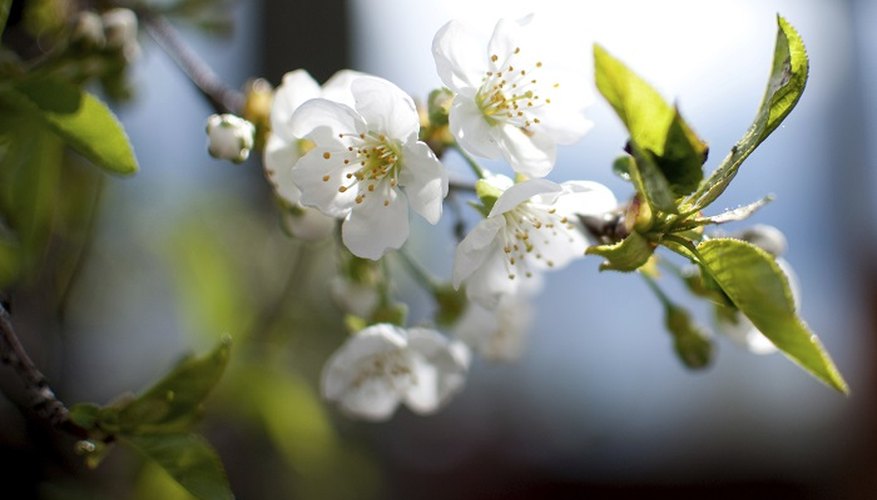The timing on pruning a flowering cherry tree is essential to ensuring the tree's health and growth. For fruit trees such as the cherry, when and how to prune can determine its success in producing fruit. Proper pruning also is a part of good care and maintenance. There are different species of cherry trees, and each has its own pruning needs.
When to prune
A general rule of thumb with pruning holds that trees that flower before late June should be pruned straight after flowering. Those that flower after June are better pruned in winter or early spring. For the flowering cherry tree, the best time is summer. Many other fruit trees are shaped or pruned back in late winter to help promote spring growth. But cherry trees are prone to silver leaf disease, which strikes in winter. Summer pruning helps the cherry tree stay healthy and disease free.
- A general rule of thumb with pruning holds that trees that flower before late June should be pruned straight after flowering.
Advantages of pruning
Proper pruning ensures the cherry tree will produce fruit the next year, but it also contributes to rejuvenating the tree, keeping it strong and promoting healthy growth. By shaping the tree with careful pruning, it will stay full and avoid becoming overgrown. Pruning also removes weak, undesirable growth and keeps the tree trim.
Pruning steps
Begin by trimming off diseased or dead branches. Remove seedlings that have sprouted at the foot of the tree. As you prune, focus the cuts 3 mm above the bud on the branch, at an angle. Make the pruning cuts according to what's called a scaffold shape -- so the tree's branches reach out all around the tree, with about 60 cm between vertical layers.
- Begin by trimming off diseased or dead branches.
- Make the pruning cuts according to what's called a scaffold shape -- so the tree's branches reach out all around the tree, with about 60 cm between vertical layers.
Sealing the cuts
While sealing pruning cuts with a paste or wound dressing has long been recommended to help protect the tree from pests and disease, evidence is mixed on whether this really helps. Some horticulturists argue that using wound dressing slows the healing process and may introduce disease organisms. For a healthy tree, leave cuts unpainted.
Pruning precautions
Different kinds of cherry trees -- Japanese, bing or black cherry trees -- require different pruning practices. For example, Japanese cherry trees are best trimmed with a hand pruner because it makes the cleanest, most crisp pruning cuts. Other pruning tool options include lopping shears, pruning saws or pole pruners. Routine pruning will vary somewhat with each type of cherry tree, so determine what kind you have before pruning. It's also critical to use well-designed pruning tools, and keep them sharp, well-lubricated and clean.
- Different kinds of cherry trees -- Japanese, bing or black cherry trees -- require different pruning practices.
